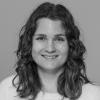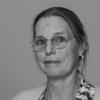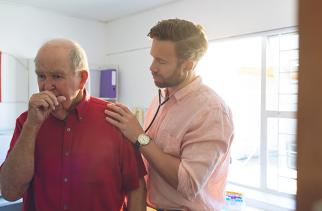Junior onderzoeker Huisartsenzorg
Publicatie
Publicatie datum
Respiratory syncytial virus (RSV) incidence estimates in primary care among adults aged 50 years and older in the Netherlands; 2011-2019.
Laarman, C., Vanhommerig, J., Summeren, J. van, Hooiveld, M., Teirlinck, A., Stelma, F. Respiratory syncytial virus (RSV) incidence estimates in primary care among adults aged 50 years and older in the Netherlands; 2011-2019. Utrecht: Nivel, 2025, 32 p.
Download de PDF
Background
The aim of this study was to estimate the incidence of respiratory syncytial virus (RSV) infections seeking medical attendance in primary care in adults aged 50 years and older in the Netherlands.
Methods
Seasonal incidence for medically attended RSV in adults aged 50 years and older in primary care were estimated for the respiratory seasons 2011/2012 to 2018/2019, ISO-weeks 40 to 20. These incidence estimates were calculated by combining data from two data sources: (1) the weekly number of new acute respiratory infection (ARI) episodes recorded by general practitioners (GPs) in Nivel Primary Care Database, and (2) the weekly proportion of RSV positive specimens obtained from naso-/oropharyngeal specimen collected by GPs from patients with ARI as part of the national sentinel respiratory surveillance. The weekly proportion of RSV positive specimen was multiplied with the weekly number of ARI episodes to obtain the weekly RSV incidence estimates. To estimate the total number of adults seeking medical attendance for an RSV infection in primary care, we have extrapolated the incidence estimate of patients with a medically attended RSV infection to the Dutch population aged 50 years and older. Additionally, the number of GP consultations for patients with an ARI diagnosis was estimated using the weekly proportion of RSV positive specimen and the weekly number of GP consultations for ARI. By doing this we could estimate the total number of contacts with the GP practice related to a presumed RSV infection in the Netherlands. Analyses were conducted for all persons aged 50 years and older, for 5-years age categories, and for patients considered to be at increased risk for medically attended RSV infection due to having ≥1 prevalent chronic conditions (e.g., diabetes mellitus, COPD/asthma).
Results
The ARI incidence rate and incidence estimates for medically attended RSV varied per season. Estimates of the seasonal incidence of medically attended RSV ranged from 3 (95% CI 2-4) to 13 (95% CI 12-15) per 1,000 persons (for seasons 2011/2012 and 2016/2017, respectively) and increased with age, especially over the age of 75 years. RSV incidence in persons with chronic pulmonary disease were estimated to be higher compared to other chronic comorbidities. The estimated overall number of persons who sought medical attendance for their RSV infection ranged from 17,000 (95% CI 11,200-24,800) to 89,100 (95% CI 79,100-100,500) for seasons 2011/2012 and 2016/2017, respectively. The number of contacts with the GP practice for patients who had a registered ARI was estimated to be 169 per 1,000 persons of which approximately 13 per 1,000 persons was estimated to be the number of contacts attributed to an RSV infection (average for the seasons 2011/2012-2018/2019). These contacts included both single and repeated contacts.
Conclusion
This study provided incidence estimates of RSV infections based on ARI incidence rates in persons aged 50 years and older in primary care in the Netherlands, with seasonal estimates ranging from 3 to 13 per 1,000 persons. Persons aged over 75 years and persons of 50 years and older with an underlying chronic pulmonary disease were at highest risk for infection with RSV. Knowledge about the incidence of RSV among adults in primary care will help policymakers in making decisions on the need and evaluation of new RSV prevention strategies, e.g. vaccination for older adults.
The aim of this study was to estimate the incidence of respiratory syncytial virus (RSV) infections seeking medical attendance in primary care in adults aged 50 years and older in the Netherlands.
Methods
Seasonal incidence for medically attended RSV in adults aged 50 years and older in primary care were estimated for the respiratory seasons 2011/2012 to 2018/2019, ISO-weeks 40 to 20. These incidence estimates were calculated by combining data from two data sources: (1) the weekly number of new acute respiratory infection (ARI) episodes recorded by general practitioners (GPs) in Nivel Primary Care Database, and (2) the weekly proportion of RSV positive specimens obtained from naso-/oropharyngeal specimen collected by GPs from patients with ARI as part of the national sentinel respiratory surveillance. The weekly proportion of RSV positive specimen was multiplied with the weekly number of ARI episodes to obtain the weekly RSV incidence estimates. To estimate the total number of adults seeking medical attendance for an RSV infection in primary care, we have extrapolated the incidence estimate of patients with a medically attended RSV infection to the Dutch population aged 50 years and older. Additionally, the number of GP consultations for patients with an ARI diagnosis was estimated using the weekly proportion of RSV positive specimen and the weekly number of GP consultations for ARI. By doing this we could estimate the total number of contacts with the GP practice related to a presumed RSV infection in the Netherlands. Analyses were conducted for all persons aged 50 years and older, for 5-years age categories, and for patients considered to be at increased risk for medically attended RSV infection due to having ≥1 prevalent chronic conditions (e.g., diabetes mellitus, COPD/asthma).
Results
The ARI incidence rate and incidence estimates for medically attended RSV varied per season. Estimates of the seasonal incidence of medically attended RSV ranged from 3 (95% CI 2-4) to 13 (95% CI 12-15) per 1,000 persons (for seasons 2011/2012 and 2016/2017, respectively) and increased with age, especially over the age of 75 years. RSV incidence in persons with chronic pulmonary disease were estimated to be higher compared to other chronic comorbidities. The estimated overall number of persons who sought medical attendance for their RSV infection ranged from 17,000 (95% CI 11,200-24,800) to 89,100 (95% CI 79,100-100,500) for seasons 2011/2012 and 2016/2017, respectively. The number of contacts with the GP practice for patients who had a registered ARI was estimated to be 169 per 1,000 persons of which approximately 13 per 1,000 persons was estimated to be the number of contacts attributed to an RSV infection (average for the seasons 2011/2012-2018/2019). These contacts included both single and repeated contacts.
Conclusion
This study provided incidence estimates of RSV infections based on ARI incidence rates in persons aged 50 years and older in primary care in the Netherlands, with seasonal estimates ranging from 3 to 13 per 1,000 persons. Persons aged over 75 years and persons of 50 years and older with an underlying chronic pulmonary disease were at highest risk for infection with RSV. Knowledge about the incidence of RSV among adults in primary care will help policymakers in making decisions on the need and evaluation of new RSV prevention strategies, e.g. vaccination for older adults.
Background
The aim of this study was to estimate the incidence of respiratory syncytial virus (RSV) infections seeking medical attendance in primary care in adults aged 50 years and older in the Netherlands.
Methods
Seasonal incidence for medically attended RSV in adults aged 50 years and older in primary care were estimated for the respiratory seasons 2011/2012 to 2018/2019, ISO-weeks 40 to 20. These incidence estimates were calculated by combining data from two data sources: (1) the weekly number of new acute respiratory infection (ARI) episodes recorded by general practitioners (GPs) in Nivel Primary Care Database, and (2) the weekly proportion of RSV positive specimens obtained from naso-/oropharyngeal specimen collected by GPs from patients with ARI as part of the national sentinel respiratory surveillance. The weekly proportion of RSV positive specimen was multiplied with the weekly number of ARI episodes to obtain the weekly RSV incidence estimates. To estimate the total number of adults seeking medical attendance for an RSV infection in primary care, we have extrapolated the incidence estimate of patients with a medically attended RSV infection to the Dutch population aged 50 years and older. Additionally, the number of GP consultations for patients with an ARI diagnosis was estimated using the weekly proportion of RSV positive specimen and the weekly number of GP consultations for ARI. By doing this we could estimate the total number of contacts with the GP practice related to a presumed RSV infection in the Netherlands. Analyses were conducted for all persons aged 50 years and older, for 5-years age categories, and for patients considered to be at increased risk for medically attended RSV infection due to having ≥1 prevalent chronic conditions (e.g., diabetes mellitus, COPD/asthma).
Results
The ARI incidence rate and incidence estimates for medically attended RSV varied per season. Estimates of the seasonal incidence of medically attended RSV ranged from 3 (95% CI 2-4) to 13 (95% CI 12-15) per 1,000 persons (for seasons 2011/2012 and 2016/2017, respectively) and increased with age, especially over the age of 75 years. RSV incidence in persons with chronic pulmonary disease were estimated to be higher compared to other chronic comorbidities. The estimated overall number of persons who sought medical attendance for their RSV infection ranged from 17,000 (95% CI 11,200-24,800) to 89,100 (95% CI 79,100-100,500) for seasons 2011/2012 and 2016/2017, respectively. The number of contacts with the GP practice for patients who had a registered ARI was estimated to be 169 per 1,000 persons of which approximately 13 per 1,000 persons was estimated to be the number of contacts attributed to an RSV infection (average for the seasons 2011/2012-2018/2019). These contacts included both single and repeated contacts.
Conclusion
This study provided incidence estimates of RSV infections based on ARI incidence rates in persons aged 50 years and older in primary care in the Netherlands, with seasonal estimates ranging from 3 to 13 per 1,000 persons. Persons aged over 75 years and persons of 50 years and older with an underlying chronic pulmonary disease were at highest risk for infection with RSV. Knowledge about the incidence of RSV among adults in primary care will help policymakers in making decisions on the need and evaluation of new RSV prevention strategies, e.g. vaccination for older adults.
The aim of this study was to estimate the incidence of respiratory syncytial virus (RSV) infections seeking medical attendance in primary care in adults aged 50 years and older in the Netherlands.
Methods
Seasonal incidence for medically attended RSV in adults aged 50 years and older in primary care were estimated for the respiratory seasons 2011/2012 to 2018/2019, ISO-weeks 40 to 20. These incidence estimates were calculated by combining data from two data sources: (1) the weekly number of new acute respiratory infection (ARI) episodes recorded by general practitioners (GPs) in Nivel Primary Care Database, and (2) the weekly proportion of RSV positive specimens obtained from naso-/oropharyngeal specimen collected by GPs from patients with ARI as part of the national sentinel respiratory surveillance. The weekly proportion of RSV positive specimen was multiplied with the weekly number of ARI episodes to obtain the weekly RSV incidence estimates. To estimate the total number of adults seeking medical attendance for an RSV infection in primary care, we have extrapolated the incidence estimate of patients with a medically attended RSV infection to the Dutch population aged 50 years and older. Additionally, the number of GP consultations for patients with an ARI diagnosis was estimated using the weekly proportion of RSV positive specimen and the weekly number of GP consultations for ARI. By doing this we could estimate the total number of contacts with the GP practice related to a presumed RSV infection in the Netherlands. Analyses were conducted for all persons aged 50 years and older, for 5-years age categories, and for patients considered to be at increased risk for medically attended RSV infection due to having ≥1 prevalent chronic conditions (e.g., diabetes mellitus, COPD/asthma).
Results
The ARI incidence rate and incidence estimates for medically attended RSV varied per season. Estimates of the seasonal incidence of medically attended RSV ranged from 3 (95% CI 2-4) to 13 (95% CI 12-15) per 1,000 persons (for seasons 2011/2012 and 2016/2017, respectively) and increased with age, especially over the age of 75 years. RSV incidence in persons with chronic pulmonary disease were estimated to be higher compared to other chronic comorbidities. The estimated overall number of persons who sought medical attendance for their RSV infection ranged from 17,000 (95% CI 11,200-24,800) to 89,100 (95% CI 79,100-100,500) for seasons 2011/2012 and 2016/2017, respectively. The number of contacts with the GP practice for patients who had a registered ARI was estimated to be 169 per 1,000 persons of which approximately 13 per 1,000 persons was estimated to be the number of contacts attributed to an RSV infection (average for the seasons 2011/2012-2018/2019). These contacts included both single and repeated contacts.
Conclusion
This study provided incidence estimates of RSV infections based on ARI incidence rates in persons aged 50 years and older in primary care in the Netherlands, with seasonal estimates ranging from 3 to 13 per 1,000 persons. Persons aged over 75 years and persons of 50 years and older with an underlying chronic pulmonary disease were at highest risk for infection with RSV. Knowledge about the incidence of RSV among adults in primary care will help policymakers in making decisions on the need and evaluation of new RSV prevention strategies, e.g. vaccination for older adults.
Gegevensverzameling






